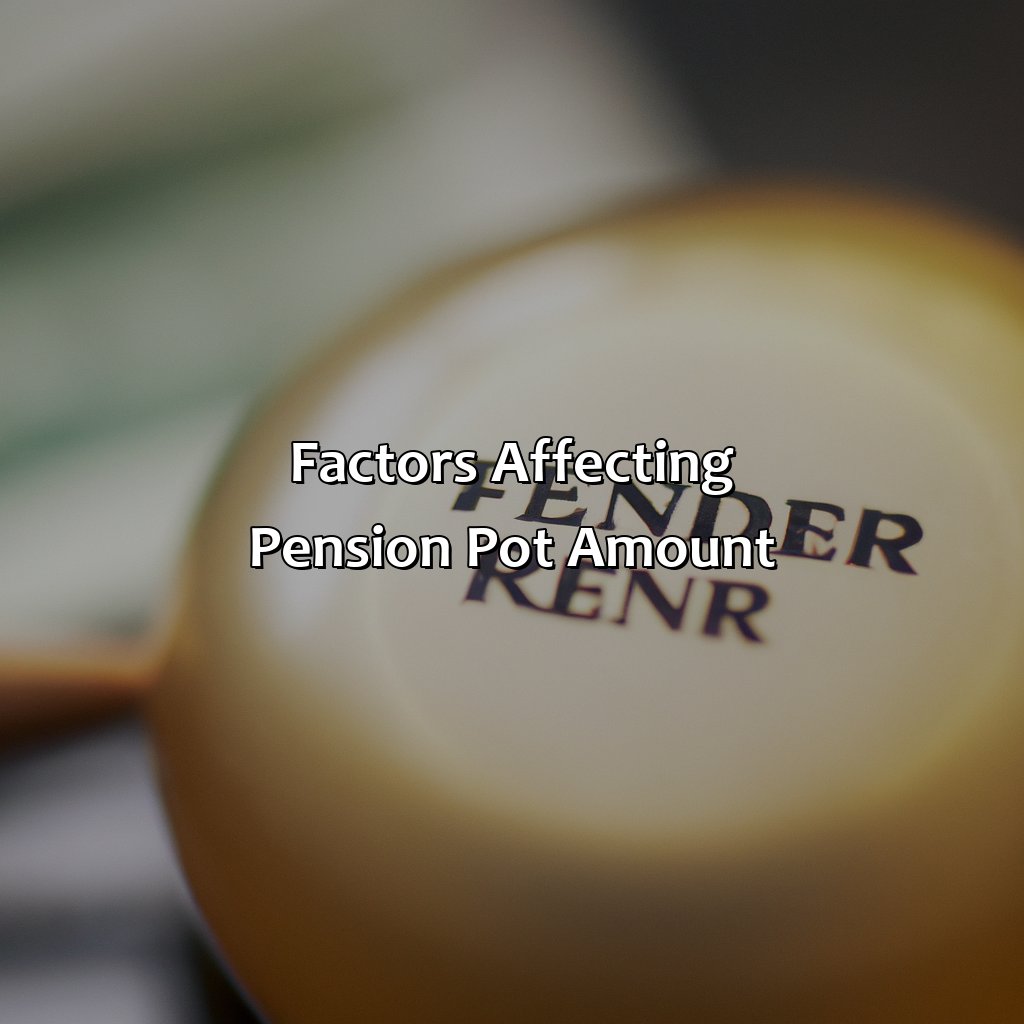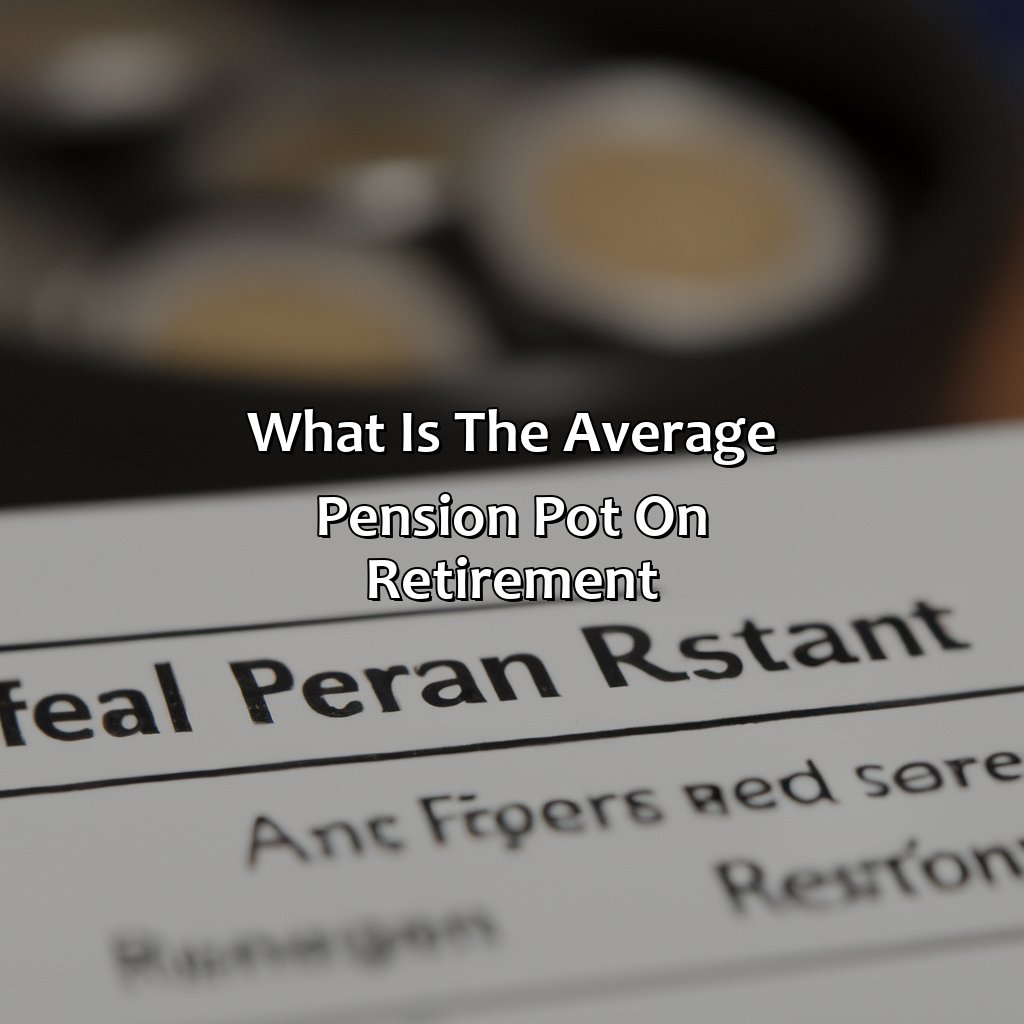What Is The Average Pension Pot On Retirement?
Key Takeaway:
- The amount of a person’s pension pot is influenced by the duration of their work and contributions, the type of pension scheme they have, investment returns and fees, and their choice of withdrawal option.
- The average pension pot in the UK includes the state pension, which provides a basic level of income, and a private pension pot, which varies greatly depending on individual circumstances.
- Recent trends suggest that more individuals are opting for defined contribution pension schemes, which require individuals to contribute more and bear the risks associated with investment returns. Future projections also indicate that individuals may need to save more to ensure a comfortable retirement income.
Planning for retirement can be stressful and confusing – especially when it comes to how much money you should have saved in your pension pot. Do you have enough to retire comfortably? You deserve to know the average pension pot so you can plan accordingly.
Understanding Pension Pot
Pension Pot Basics: What You Need to Know
Pensions are a form of retirement income that are essential for individuals who wish to secure their financial future. Your pension pot is the total amount of money that you have saved up throughout your working life, and it is what you will rely on for your retirement income. Understanding pension pot basics is crucial for planning your retirement.
When saving for retirement, your money is invested and will accumulate interest over time, which will then grow your pension pot. The pension pot’s final size depends on various factors such as how much you save each month, the age you start saving, and the types of pension investments you make.
It’s also worth noting that the average pension pot size is influenced by the amount of contributions made by pension scheme providers and how long the person has been a member of the scheme. Generally, the earlier one begins to save and the more consistently they save, the larger the pension pot will be.
According to a recent study by Aegon, the average pension pot in the UK is £61,897. However, this amount is insufficient for most individuals to retire comfortably, indicating that it’s important to start early, save consistently and make smart investment decisions to ensure that you have enough saved up for a comfortable retirement.

Image credits: retiregenz.com by Joel Washington
Factors Affecting Pension Pot Amount
Factors Contributing to Pension Pot Amount
Retirement planning involves many factors that influence the size of an individual’s pension pot. These factors can include the duration of their pension contributions, retirement age, and investment performance.
The table below shows a breakdown of the most significant factors affecting pension pot amounts:
| Factors | Description |
|---|---|
| Pension Contribution | The amount paid into the plan each year and the duration of payment |
| Retirement Age | The age at which an individual retires and starts taking payments |
| Investment Returns | The performance of the invested pension funds over the years |
Overlooking unique details such as tax regulations and pension schemes can negatively affect the pension pot amount.
One man’s story is an example where not understanding how his pension scheme worked led to lower than expected payouts. He didn’t realise that his pension pot was invested in a life annuity plan, providing lower monthly payments, thus having less money to live on throughout his retirement.

Image credits: retiregenz.com by Joel Duncun
Average Pension Pot Amount
Retirement fund statistics divulge the average sum of resources retirees possess to sustain their post-retirement life.
After years of contributions, retirees accumulate a pension pot. The average pension pot amount in the UK is around £50,000, which frequently falls below the recommended retirement savings threshold. This amount could fluctuate based on various factors such as income, age, gender, and other personal variables.
Often, retirees tend to withdraw funds hastily, without investing much thought, resulting in inadequate savings in the long term. However, one can avoid falling short by preparing a meticulous savings plan early. Factors that influence pension pots include a pension scheme’s type, employer contribution percentage, and the amount an employee contributed overall.
Sarah, a retiree, realized that her pension funds were barely sufficient to cater to her requirements post-retirement. She advises that one should take adequate steps and plan early to build a more secure retirement corpus. Being proactive in savings initiatives assures greater financial stability post-retirement.

Image credits: retiregenz.com by Adam Duncun
Five Facts About What Is the Average Pension Pot on Retirement:
- ✅ The average pension pot on retirement in the UK is around £100,000. (Source: Money Advice Service)
- ✅ This amount is not enough to provide a comfortable retirement income and is likely to result in reliance on state benefits. (Source: Which?)
- ✅ The average pension pot varies greatly depending on factors such as income, age, and retirement goals. (Source: PensionBee)
- ✅ Many people may have multiple pension pots, making it challenging to calculate the total amount saved for retirement. (Source: The Guardian)
- ✅ It’s never too late to start saving for retirement, and small contributions over time can add up to a significant pension pot. (Source: Moneywise)
FAQs about What Is The Average Pension Pot On Retirement?
What is the average pension pot on retirement?
The average pension pot on retirement varies depending on a number of factors, including your occupation, contributions, and the type of pension plan you have. However, as per a recent survey, it was found that the average UK pension pot was around £61,897 for those retiring in 2021 – a significant increase from last year’s £54,000.
What factors affect the size of my pension pot?
Several factors could affect the size of your pension pot, including your contributions, investment performance, the number of years you spend saving, and the type of pension plan you have. Some pensions may also offer bonuses, such as a tax-free lump sum on retirement.
What is a workplace pension?
A workplace pension is a type of pension scheme offered by employers to help their employees save for retirement. Employers are required to enroll their eligible employees in a workplace pension scheme and make contributions to the fund along with the employee, unless the employee opts out of the scheme.
What is a personal pension?
A personal pension is a pension scheme that is set up by an individual for themselves. You can set up a personal pension plan through a pension provider or financial adviser. One advantage of personal pensions is that they can offer more flexibility when it comes to contributions, but the onus of ensuring you save a sufficient amount for retirement lies with you alone.
Can I have more than one pension pot on retirement?
Yes, you can have more than one pension pot at the time of your retirement. You can merge your pensions into one pot or keep them separate, depending on your preferences. It’s always a good idea to consult a financial adviser to assess the best strategy to optimize financial returns.
What can I do if my pension pot is smaller than expected?
If your pension pot is smaller than you expected, there are still several options available to you, such as delaying retirement, increasing your contributions, or reviewing your investment strategy. You can also explore other retirement options, such as equity release or downsizing to help increase your financial position. Consulting with a financial advisor to devise a sound financial strategy can be beneficial in this regard.





